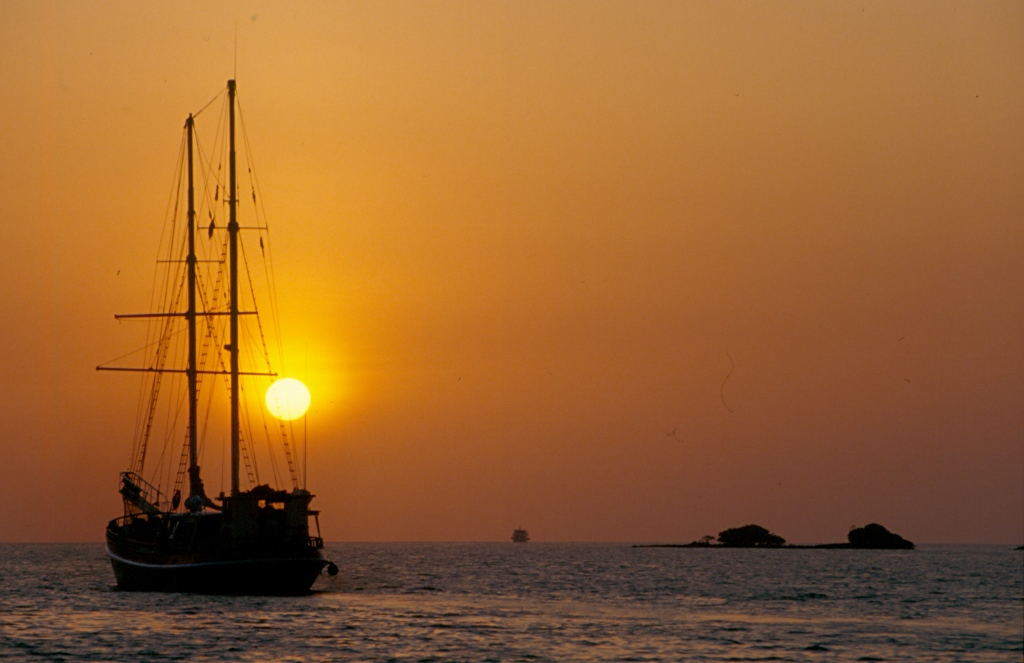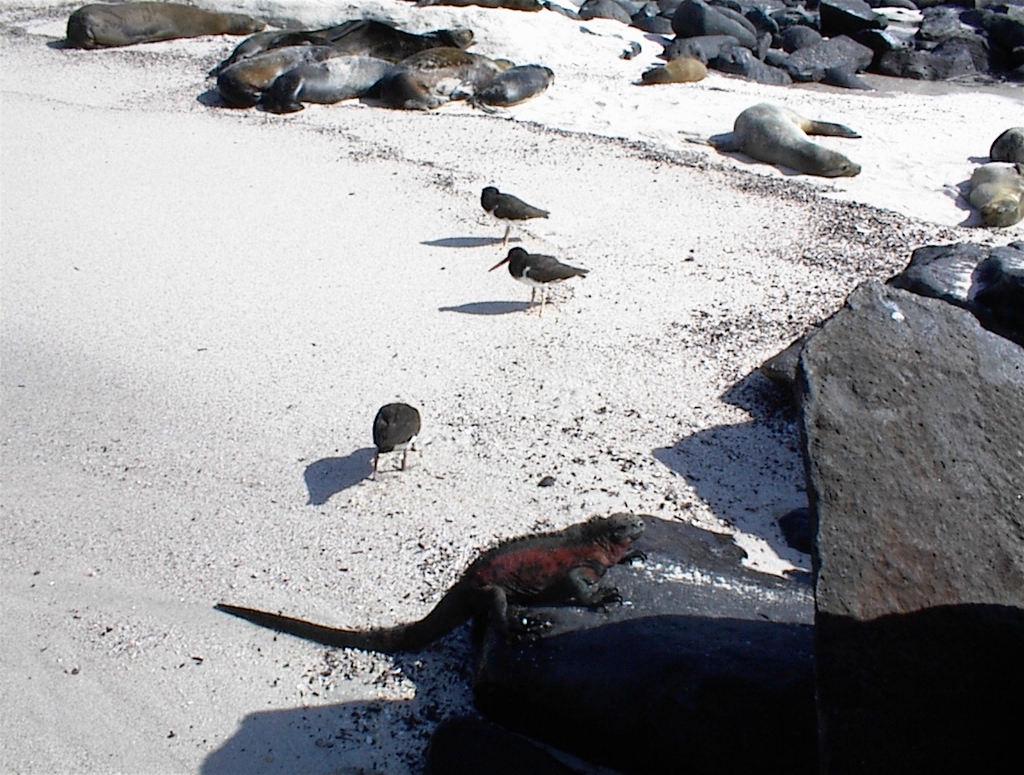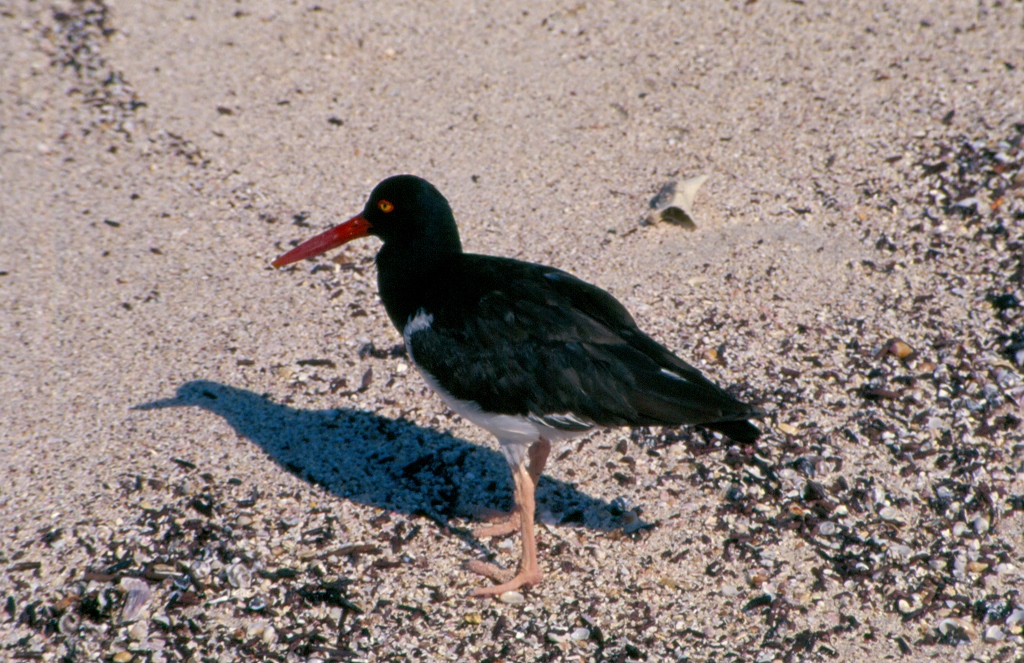As the plane hummed, only the upper part of the Cotopaxi volcano could be seen through the window; everything else was covered by clouds. A perfect cone of the still active volcano stretched elegantly towards the sky and its snow-covered top really left one with an impression of an icing on a cake. In order to reach the Galapagos, one need to fly either from the capital Quito or from Guayaquil, the second largest city situated on the Pacific coast, where the plane from Quito always makes a stop and collects more passengers travelling to the islands of the Columbus Archipelago which has been the official name of the archipelago since 1892. It was then that the Parliament wanted to mark appropriately the 400th anniversary of Columbus’s arrival to the New World, so they decided to grant to the Galapagos the honour of changing the name. The ordinary people did what needs to be done with all political decisions that interfere with the natural state of things – they ignored this one and so the entire world happily agrees about the name that is so familiar to everybody. Some romantic souls call it the Garden of Eden, but that’s an overstatement. Some other tropical islands may be considered as a paradise on earth. The Galapagos are magical, unique and stunning islands that occasionally resemble a wasteland.
The airport we landed at is located on a smallish island Baltra. There are a couple airports more, but they are used for different planes and different purposes. Large majority of tourists start from this airport. After the passport control, you have to pay the entry fee for the National Park, since some 97 per cent of the territory of the Galapagos belongs to the NP, and this is followed by customs control in charge of checking whether any food, animals, seeds, bugs or anything else that may endanger the current ecological and biological balance is being brought in. Suffice that they got rats from ships in the past, who now they cannot get rid of although the rats decimate eggs of various native inhabitants of the Galapagos. Even dogs, goats, pigs, donkeys, deer and cattle have given their modest, yet impressive contribution to the destruction of the original flora and fauna. But taking into account that humans are the greatest pests on earth, there are some serious considerations of limiting, even prohibiting, visits at least for a little while until the things get better. However, Ecuador, as one of the poorest countries in Latin America, simply cannot afford this for the time being. Still, everybody who comes to the Galapagos must be prepared to go through detailed customs control on the way out in order to make sure that no eggs, native animals, plant cuttings, etc., are taken from here.
Once all the controls are passed, you are met by the guide from your ship. In our case, this was Cesar. There was an organized short bus transfer to a bay which holds only a small port that tourist ships leave from. As we waited for a boat to take us over, we started to get to know the hosts – sea lions that are generally everywhere, even in such an inconspicuous place as the one we started from. The ship we came to seemed of age and modest, which means it was not promising. During the next week, it hosted 12 passengers, 5 crew members and the guide. And there were only 14 beds! Luckily, the crew was kind enough to allow us to have the first pick, while they simply managed.
The Galapagos archipelago consists of some twenty islands, bigger and smaller, and around 50 islets, rocks or volcano tops peering from the ocean. Only five islands are inhabited and none has a natural source of fresh water. Volcanic rocks are far too porous to allow for it. Still, according to some estimates, there are around 20,000 residents living on the islands and counting. For this reason, there are limitations even for inhabitants of Ecuador as to how long they are allowed to stay and work on the Galapagos, and only after a certain longer period of time it is possible for them to get a permanent residence, which of course does not apply to those who have indeed been born there, thus getting the residence automatically. Since the Galapagos, regardless of the other beauties of Ecuador, continues to be the main attraction of the country, this is at the same time the place where most tourists want to come. Considering that money follows tourists, working on the Galapagos represents an opportunity to earn good money, which makes it an attractive destination for the industrious compatriots. Salaries are higher than on the continent, plus there are high tips, which even guide books emphasize as very important and indispensible.
After we had settled at the ship, we were served lunch. Well, this was where Alfredo, our cook who we were getting to know, really did not make a good impression. It was a tasty meal alright, but quite insufficient, so panic started to creep up through our ranks. Luckily, Alfredo stepped it up already for dinner, thus confirming the fine reputation of ship cooks, and continued to do so until the end of our tour. Soon after lunch, we started with the programme of visiting some of the islands. The touring programmes depend on the length of stay, size and speed of the ship, and partially on the taste, and they last from 4, 5 or 8 days to a fortnight. Our tour was somewhere in the middle, rather a typical one. When I say “our,” I mean my 3 friends, 6 Americans, 2 Germans and I. As it turned out, this was quite a fine and pleasant company, and taking into account the wonderful and exceptionally kind crew members (the guide included), the eight days linked to a relatively small space went by quite harmoniously.
 First sunset on Galapagos
First sunset on Galapagos
On the first day we had one visit: beach Barchas on the island Santa Cruz. This was the right moment for Cesar to explain some basics between wet and dry landing. Wet landing means you get to a beach on a small boat, take off any regular footwear you have, jump into the water and then get onto the land. Dry landing is when the boat gets to some kind of a dock and you simply step onto it. The return onto the ship was always a version of wet landing applied with no exceptions – as soon as we got out of the dinghy, we were obliged to put our feet, one at the time, into a bucket of water in order to rinse off any residue sand, spending the rest of the time on the ship barefoot. Well, here at the Barchas beach we got to know all the charms of wet landing which, considering the fine air temperature, white sand, warm water and lots of fun on account of all the splashing, was an ideal beginning of the cruise. First we encountered ‘Sally Lightfoot crabs.’ What can you do, that’s their name. Even the Latin one is not any better – Grapsus grapsus. Well, these crabs were everywhere and with their fiery red colour they seemed like a beautiful ornament and contrast against the black volcanic rocks and mostly white sandy beaches. This was also the first place where we saw marine iguanas which were a huge surprise to me since they were significantly smaller than I had imagined. The images that get to us are mostly close-ups and enlarged, so I used to imagine them almost as colossal monsters. Iguanas, both sea and land ones, are peaceful, small and in their ugliness actually infinitely cute creatures. Marine iguanas are of dark, blackish colour, with red, green and light brown “patches” across their body depending on the type of sea algae they feed on, while land iguanas are light brown and yellowish, and slightly bigger than their sea relatives, but still far from classical dinosaurs. According to my rough estimate, not a single one of those we saw while there exceeded a length of one meter, tail included. The tail of marine iguanas is much longer than the body because they need it to move left and right thus propelling them through water. We walked with Cesar along the beach for a little while and then it was the time to go swimming.
 American oyster-catchers and a marine iguana (photo: (photo: courtesy of VT)
American oyster-catchers and a marine iguana (photo: (photo: courtesy of VT)
The water at that beach was nice and warm, although there were slightly bigger waves. It was by complete coincidence that I went to this trip in March. As it turned out, the period from February to April is considered the best for a visit, swimming and especially for snorkelling. This is the time of the year when water and air are warmest, the ocean is relatively calm and the water is clear because of its reduced movement. The coldest month is September, when the air temperature may be below 20°C with strong winds and big waves. The main season, however, is in July and August, around Christmas and Easter, but more because of the traditionally free time of tourists than on account of the quality of the overall conditions.
 American oystercatcher
American oystercatcher
In the evening we anchored in a small strait and at some point around dawn we moved on. The ship headed for the open sea and this was when the first problems appeared. As soon as I would get out of my bunk and onto my feet, my stomach seemed to go unpleasantly up. After a couple of attempts, I realized that the waving was stronger than me, so I got back to the horizontal position again. The friend with whom I shared the cabin had already gotten up and went out and soon I heard the rest of the group. Shortly they called me and told me I was not the only one and that they were all quite seasick, but that it was better outside, even in the upright position, as well as that the crew had told them that seasickness would be over soon and that we would get used to the waving of the ship. I bravely joined them and it was really the only occasion when any of us felt unwell.